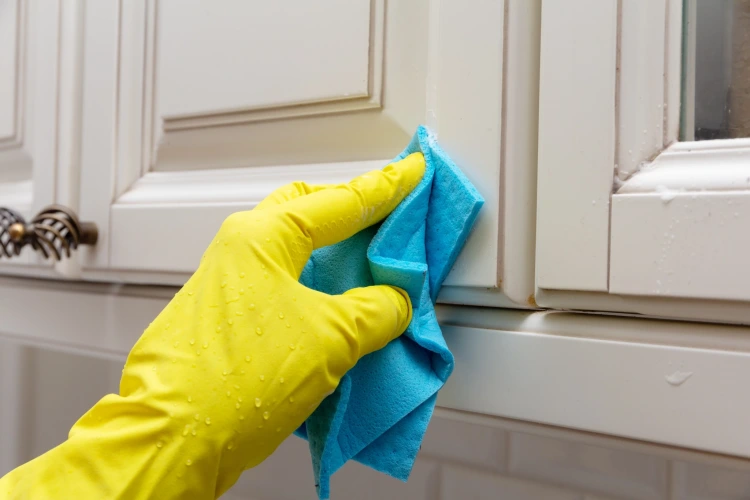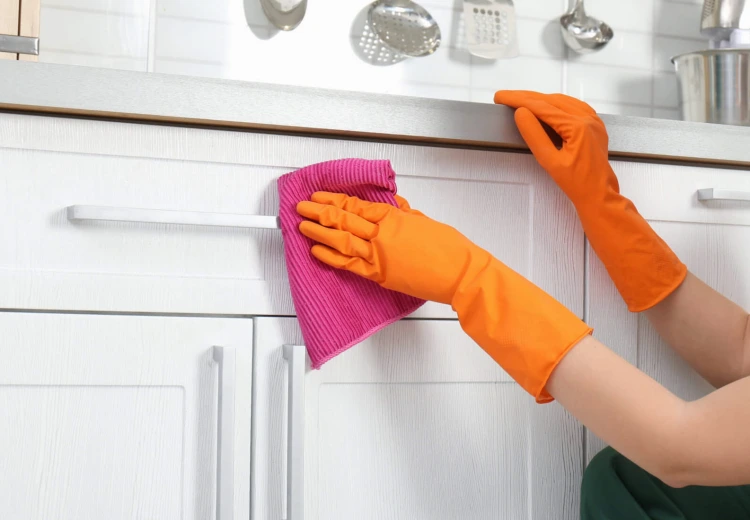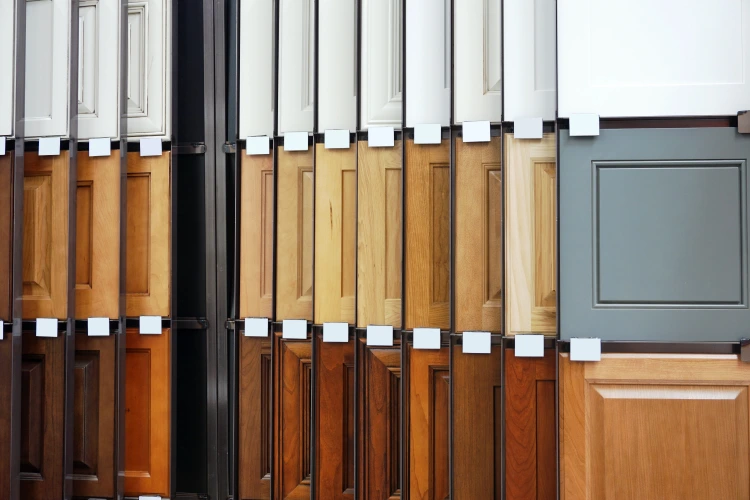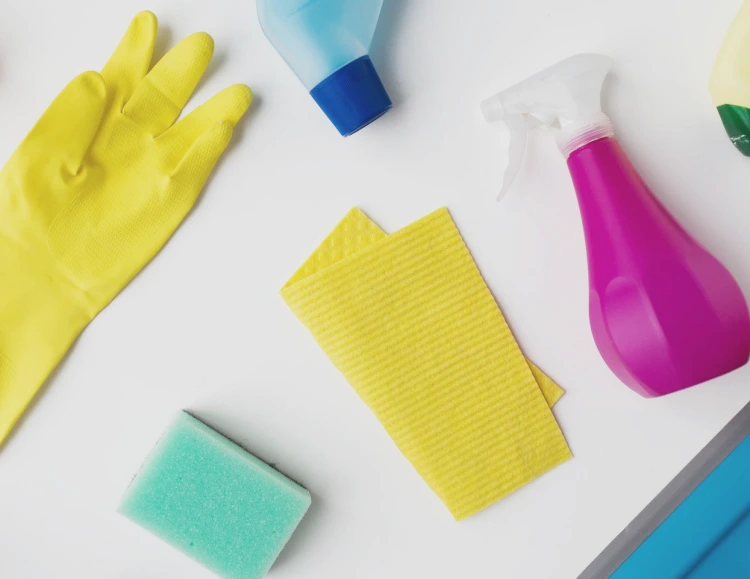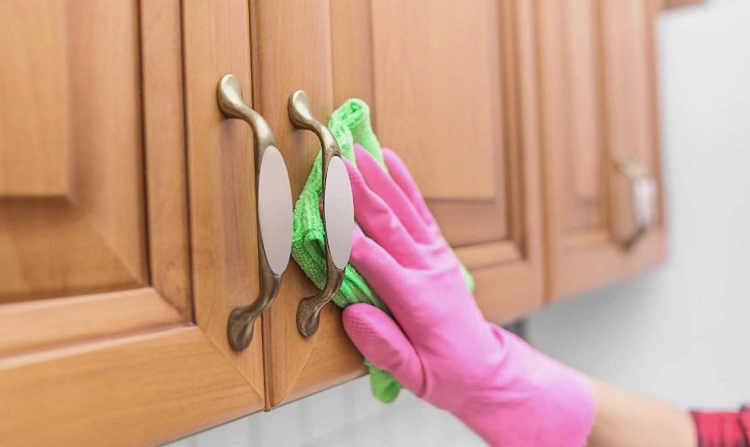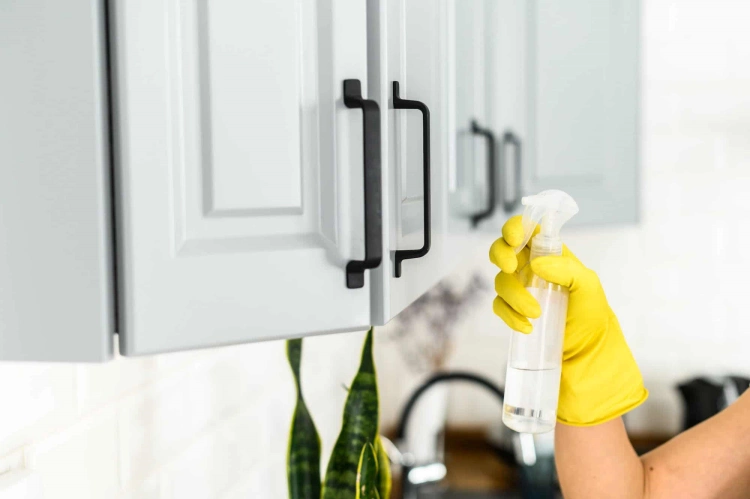Modern kitchen equipment is designed to facilitate the cooking process and food storage. The kitchen is most often equipped with a sink, a cooker, a fridge for storing cooked and raw food, and cupboards for crockery and cutlery. Many housewives also use dishwashers, and cooker hoods are placed over cookers to remove bad smells and fumes and purify the air. No matter how many innovations are pushed or how many ways are devised to make the cooking process easier, we just have to accept that cooking will always leave dirt on kitchen cabinets and walls. That’s why, in today’s article, we’ve decided to share with you the easiest tips on how to clean sticky grease off your kitchen cabinets!
How to clean sticky grease off kitchen cabinets?
We know that cleaning kitchen cabinets and walls is not the most fun thing to do, and we often even put it off until later in time. This is precisely the reason for the accumulation of sticky grease that is difficult to remove. Worst of all, sometimes to keep the kitchen clean, we use methods that damage the cabinets and spoil the look of the kitchen as a whole. Scratches, discoloration due to more aggressive cleaners, or other unpleasant marks can occur in places. We’ve put together some helpful tips on how to clean your kitchen quickly and easily. Keep reading to find out how!
Tips on cleaning kitchen cabinets
There are a few things to consider before you move on to the actual cleaning of your kitchen furniture. It’s a good idea to keep them in mind, so you don’t get frustrated in case something goes wrong, and your kitchen loses its original look. Here are the most important steps to take before cleaning!
1. Find out what materials the kitchen cabinets are made of
Always approach with care and caution before using any kind of cleaning products. Kitchen cabinets nowadays are made of wood, MDF or particleboard, and different types of finishes and varnishes are applied. It is therefore always a good idea to test the cleaner you have chosen on a small area before you start cleaning. See how it reacts with the surface – apply a small amount and allow it to dry for a short time, then assess whether there is a color change in the treated area compared to the rest of the kitchen. If you notice anything similar, then discontinue cleaning until you find a suitable cleaner for your kitchen.
2. Prepare everything you need for cleaning
Under no circumstances use grease scrapers or abrasive cleaners. You may damage the surface of the kitchen cabinets. We recommend that you use soft cloths, sponges as well as homemade cleaners. To clean hard-to-reach areas, use an old toothbrush soaked in cleaning solution. A table knife wrapped in a cloth can be used to clean narrow crevices. After cleaning, wipe all surfaces with a clean, dry, soft cloth to avoid streaking.
Homemade cleaning solutions
Everyone can just quickly and easily prepare a homemade solution for cleaning kitchen cabinets. It is preferable to the harsh detergents on the market, which are more likely to permanently damage the surface of kitchen furniture. As mentioned earlier, it is very important to know what material your kitchen is made of so that you can choose the right cleaner for it.
1. Cleaning wooden kitchen cabinets
Be extremely careful when cleaning kitchen furniture made of natural wood. Many cleaners specifically designed to remove grease and stains corrode wood. Homemade cleaners containing citric acid or ammonia are also not suitable.
Which is the best solution, then? A mix of baking soda and vegetable oil will do the job! This homemade cleaner is suitable for wooden kitchens with a lacquer finish.
- You will need 1.5 tablespoons of baking soda and 1 tablespoon of vegetable oil. Mix them in a bowl.
- Before applying the cleaner, dampen the surface lightly with a cloth.
- Apply the mixture evenly on the surface.
- The results are instantly visible – the wood is immediately cleaner, and the oil gives it an extra shine.
- After cleaning, remove the soda residue with a soft, slightly damp cloth.
We recommend that you clean your kitchen furniture this way at least once every 2 months!
2. Cleaning solutions for all surfaces except natural wood
There are many ways to clean your kitchen cabinets of sticky grease and other grime using products we all have at home. Here are two easy versions of a homemade cleaning solution that is effective and easy to make.
Vinegar and warm water
One of the easiest methods of cleaning kitchen cabinets (apart from those made of natural wood) is by using a solution of vinegar and warm water. Mix them in equal proportions and apply to the surface using a spray bottle or a cloth. After cleaning, wipe the surface first with a damp cloth and then with a dry one. However, you should not apply this cleaning method more than once every three months.
Liquid soap and baking soda
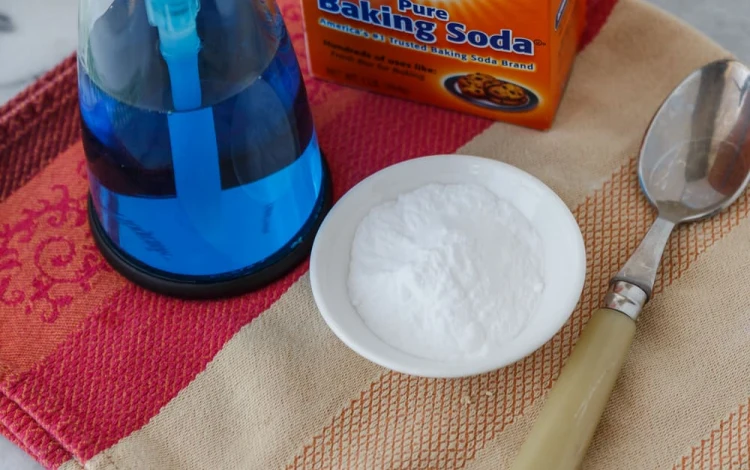
Another easy way to clean grease on kitchen cabinets, countertops and even tiles is by mixing liquid soap and baking soda in equal proportions – for example, 2 tablespoons of each. Apply the mixture to the surfaces and leave for about 10-15 minutes. Remove the grease and finally wipe with a clean, damp cloth.

